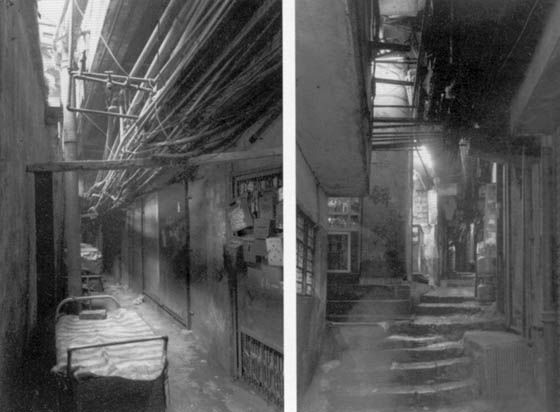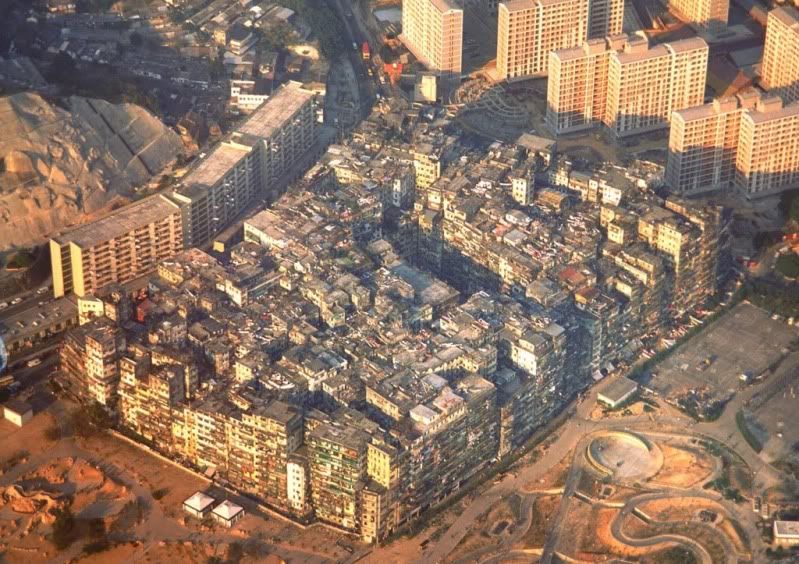A city is a vertical landscape, organized linearly, radially, sometimes seemingly at random; the horizon is not the edge of the earth’s curvature, but instead the structures that define not only space but the dynamics of the space. It is not a sterile grid in which everything is set in its own place, but an integrated system in which everything is interdependent, and yet, it can be self-sustainable all on its own, self-contained cohesive unit separate from the world without.
Then take this city, and compress it. Compress it tenfold, a hundredfold, pushing ever more into a smaller space, and suddenly the old structures are no longer sufficient to support its populace, its original infrastructure and functions and standards. Some things must shift in order to re-adapt and to accommodate its new conditions, while others must be sacrificed altogether. The result is a hyperdense urban area, a living, breathing organism, complex and incomprehensible and breathtakingly terrifying all at once.
Perhaps one of the most intriguing examples exists in the Kowloon Walled City of Hong Kong.
It was once a military fort, existing for hundreds of years without much change. Once urban settlement began, however, it grew and grew- never spilling outside the boundaries of its walls, but building upon building upon building springing up and around and against and on top of and between one another. The buildings tended to hover somewhere between 10 and 15 storeys, depending on the source one reads- and at is peak population may have reached a density of 3,249,000 people per square mile. It was fraught with crime and and violence, and although many of its residents might have been perfectly average and hardworking, the area lay outside the jurisdiction of both the British government and the Chinese. There was no official control, no official regulation. The Walled City was left to its own devices. Yet it thrived and it flourished, a city and a world all unto its own.
Architecture was, on average, haphazard; additions were were made wherever there was space. Wikipedia provides:
The City’s dozens of alleyways were often only 1–2 m (3.3–6.6 ft) wide, and had poor lighting and drainage. An informal network of staircases and passageways also formed on upper levels, which was so extensive that one could travel north to south through the entire City without ever touching solid ground. Construction in the City went unregulated, and most of the roughly 350 buildings were built with poor foundations and few or no utilities. Because apartments were so small—about 60% were 23 m2 (250 sq ft)—space was maximized with wider upper floors, caged balconies, and rooftop additions. Roofs in the City were full of television antennas, clotheslines, water tanks, and garbage, and could be crossed using a series of ladders.â€
Instead of streets, there are only alleys so one may navigate between buildings. Yet the buildings are packed so closely together that the space between them is nearly negligible. There is little light, little breathing room. Were one to stand outside at street level, there might peek a sliver of sky, and perhaps sunlight would reach down when the sun was high, as a deep and narrow rift cut through canyon walls. The buildings of the Walled City look less like separate structures than one whole, as if one took any other city, ran it through a trash compactor, and spit it back out- fissures here and there, a crack, a small awkwardly-shaped opening there, where nothing else might fit- but the distinctions and boundaries between personal and public space are no longer defined by conventional standards.

It was demolished in 1993, and in its place today stands an open park. Broken and whole, derelict but alive, the Kowloon Walled City was (and is) nothing to be trifled with. Should it have survived, it might yet be a microcosm of its own, a hyperbole of the metropolis, a distinct urban ecosystem unlike any other.
Other images of interest (which you really ought to look at): The Walled City in 1973, and a ridiculously detailed artist’s rendering of a cross section.



Leave a Reply
1 Comment on "The Greatest City That Was"